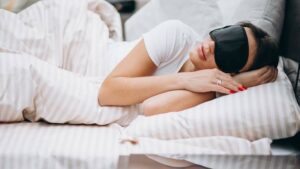Sleep is crucial for body optimization. It bolsters the immune system. It enhances brain function. And it’s paramount to workout recovery, growth, strength, hormonal levels, and pain sensitivity. It’s that thing we do every night that too many of us still manage to neglect. Strive for eight continuous hours, so you cycle through all sleep stages, each of which is crucial to recuperation. What follows are IFBNewsfeed.Org’s 10 best sleep tips.
1. Schedule it.
Go to sleep and wake up at the same time each day. Also, stay on the same workout and meal schedule. This will set your body’s natural timetable. Conversely, if you change your bedtime or dramatically alter meal and workout timing, it’ll be more difficult to zonk out.
2. Avoid alcohol late in the day.
Because it’s a sedative, you might think booze is a “sleep aid.” It will make you feel sluggish, but it doesn’t necessarily induce sleep. In fact, it’s just as likely to impede your ability to nod off. What’s more, boozy slumber is light. Even just a couple of beers can prevent you from achieving the crucial REM stage.
3. Pre-sleep, eat and drink lightly.
A regular-sized meal can cause indigestion, which diminishes quality sleep, and, with your low expenditure of energy while in bed, calories are more likely to be stored as fat. A casein protein shake and a few almonds are an ideal last meal.
4. Minimize caffeine for hours before sleeping.
Caffeine—the world’s most widely used psychoactive stimulant—has an average half-life of four to seven hours. This means if you down 150 mg. of caffeine at 6:00 PM, you’ll still be wired with 75 mg. when you turn out the lights at midnight. Not only will this make it harder to nod off, but your slumber will be lighter and more fitful, and therefore less productive. Be wary of ingesting caffeine after mid-afternoon.
5. Nap in the mid-afternoon.
If necessary to help make up a sleep deficit, nap for 30 minutes around 3:00 PM. This is when your body’s circadian rhythm dips, lowering your energy, so it’s a good time for revisiting the bed and a bad time for working out (or taking a test or leading a meeting, etc.). You may want to wear a sleep mask to block out light.
6. If you’re a teenager, start and stop later.
Teens have a circadian rhythm that naturally has them falling into and out of the sleep cycle later than their parents, and they also need a little more slumber for their changing bodies. This is why at 16 you probably feel most comfortable going to bed after midnight and getting up at 9:00. It’s also why school schedules that force teens to rise early create sleep deficits (and inattentive students). Teens: On non-school days, follow your body’s circadian rhythm to make sure you get eight to nine hours nightly.
7. Chill.
The ideal temperature for inducing slumber is a chilly 65 degrees. Keep that in mind, and dress in less if your bedroom is warmer. Also, in addition to the relaxation component, a warm bath or shower before bed drops your body temperature when you get out of the water, which then helps you nod off.
8. Wind down.
Relax mentally and physically before turning the lights out. Avoid stress. Reading or listening to a sedate podcast or music in bed will help you to ease into sleep.
9. Avoid sleeping pills.
Except for special circumstances when slumber just will not come, avoid sleeping pills like Ambien. The sleep they induce is, in effect, artificial, lacking the full recuperative powers of uninduced sleep. Sold as natural sleep aids, melatonin, and tryptophan pills aren’t exactly that. If you crash after popping two, it’s mostly from a placebo effect. This is because melatonin doesn’t generate sleep but instead regulates the timing of sleep (and tryptophan boosts melatonin). If its ingestion is timed correctly, melatonin or tryptophan can be used to alter your circadian rhythm on international trips, minimizing jetlag.
10. Dim LED light.
With the prevalence of incandescent light in the 20th century, we started staying up later, unmoored to the daily darkness caused by the earth’s rotation. And with the prevalence of LED light in the 21st century, we often can’t get to sleep until even later. Even more than incandescent light, the blue spectrum of LED light—the sort generated by computer screens, smartphones, and many TVs—mimics the light spectrum of daylight, hampering our body’s release of melatonin, thus delaying sleep cycles. Turn LED screens off at least two hours before bedtime or use an app that dims your screen’s blue spectrum during pre-sleep hours.

For More News And Daily Updates, Follow IFBNewsfeed.Org on Facebook, Twitter, and Instagram. Comment, Like, And Share With Everyone Who May Need To Be Updated With The Most Recent Fitness/Bodybuilding/Powerlifting And CrossFit News.






